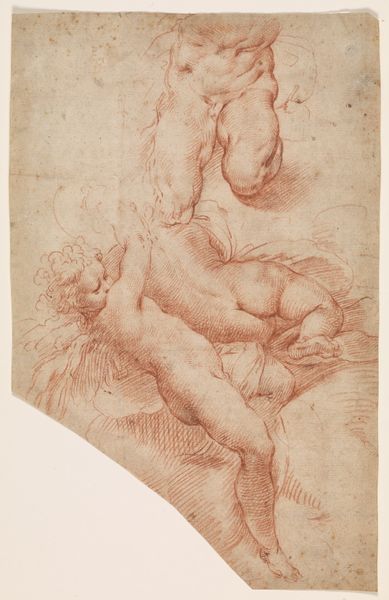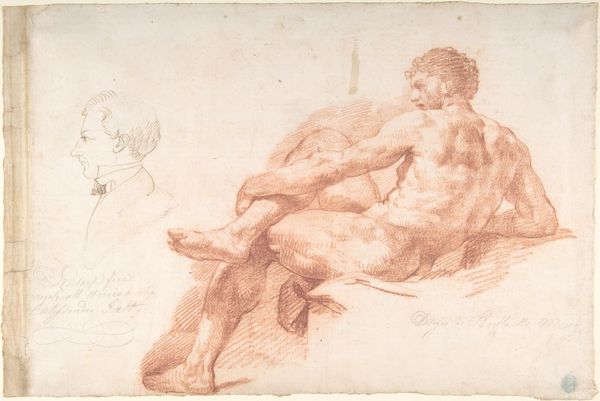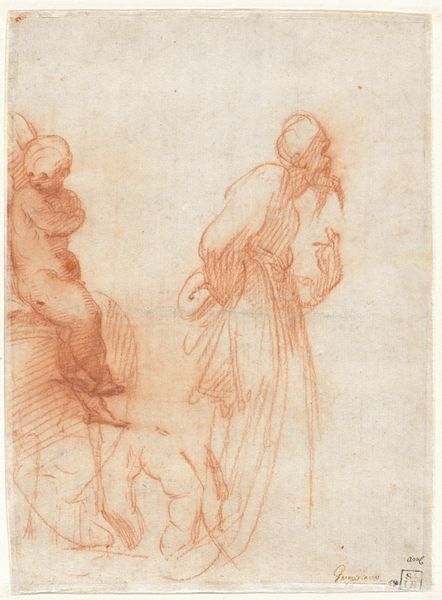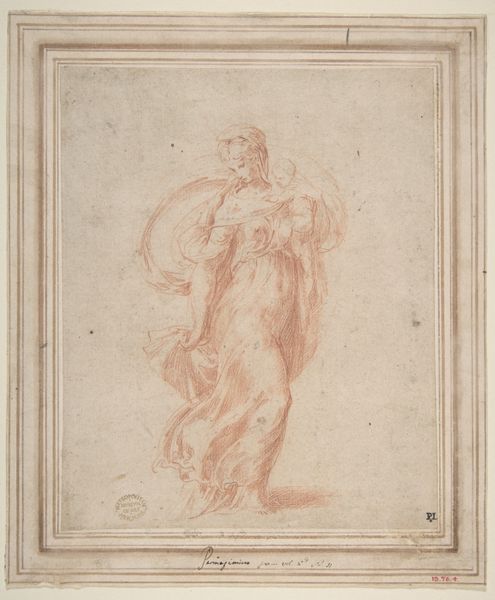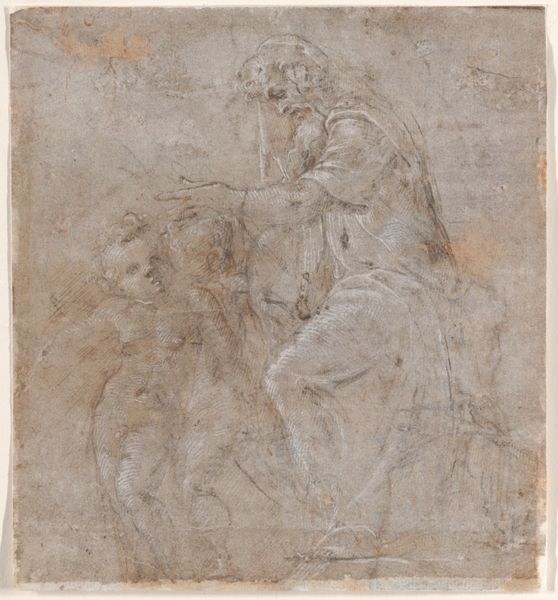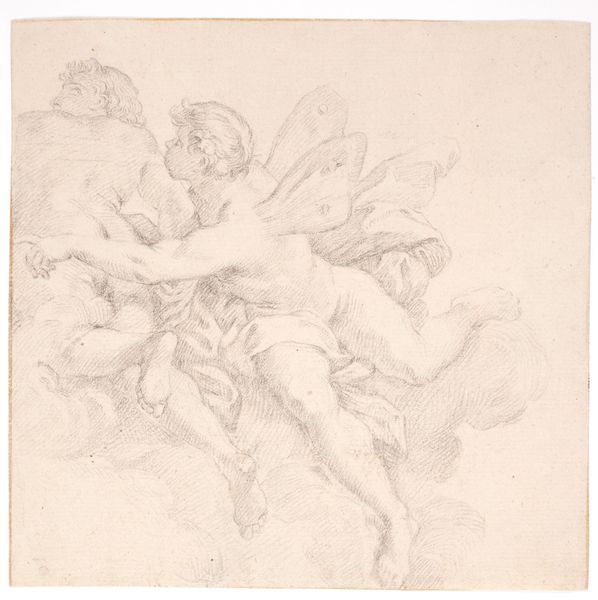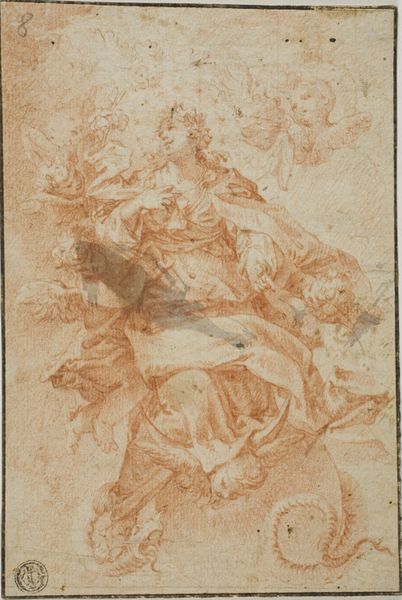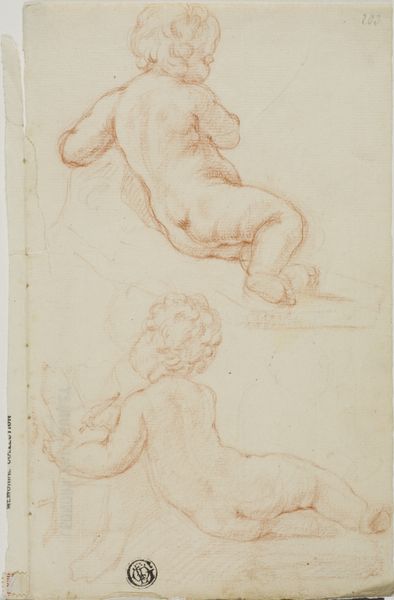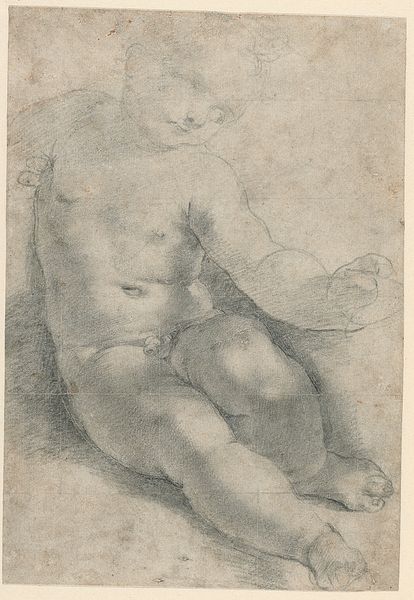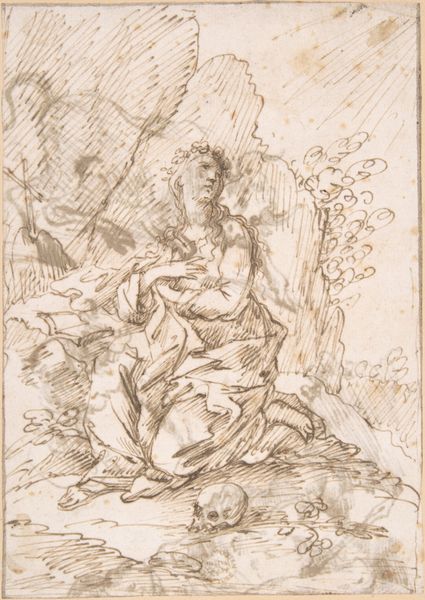
drawing, print, paper, chalk, charcoal
#
portrait
#
drawing
# print
#
charcoal drawing
#
figuration
#
paper
#
chalk
#
charcoal
#
history-painting
#
italian-renaissance
Dimensions: 180 × 181 mm
Copyright: Public Domain
Curator: Here we have "Two Sketches of Saint Sebastian," a work rendered around 1639 by Simone Cantarini. It’s a chalk and charcoal drawing on paper, housed here at The Art Institute of Chicago. What's grabbing you right away? Editor: Immediately? The colour. It's this blood-orange, almost sanguine shade, that fills the figures and contrasts against the emptiness of the paper around them, so it feels inherently raw and fraught, like a memory surfacing through dreams. Curator: Indeed, that raw feeling comes partly from Cantarini's drawing process. Red chalk allowed a certain freedom in sketching outlines and building up tonal masses very quickly. The way he handles form, however, does have precedent. There's definitely influence here from his engagement with Guido Reni’s style. Editor: It's interesting you mention his mentor because to me the contrast between Reni’s and Cantarini’s Sebastian interpretation makes this so interesting: while both have a refined, courtly aesthetic, this version feels a lot more like a human caught in torment, as though you are watching a memory of him as he suffered. It’s not necessarily divine or romanticized. Curator: That touches upon the politics around how Saint Sebastian was depicted at the time, which went hand in hand with civic and personal anxieties during plague outbreaks. Images of him experienced a resurgence. Here the figures become sites of contemplation in this dual study on form. Editor: Right, it’s like he's trying to pin down the core emotional state more than just representing it, maybe in its quiet moment just before or after. It also prompts the question of how Saint Sebastian may have felt: the agony of his wounded flesh, how heavy the world felt... You see a quiet, internal torment made physical here. Curator: An intimacy born from the interplay between faith, crisis, and artistic expression. Thanks for making me reconsider how Saint Sebastian served as a kind of mirror reflecting wider cultural pain. Editor: Definitely a dialogue with history. And sometimes it’s enough to just sit with that echo and the quiet chaos it inspires.
Comments
No comments
Be the first to comment and join the conversation on the ultimate creative platform.
